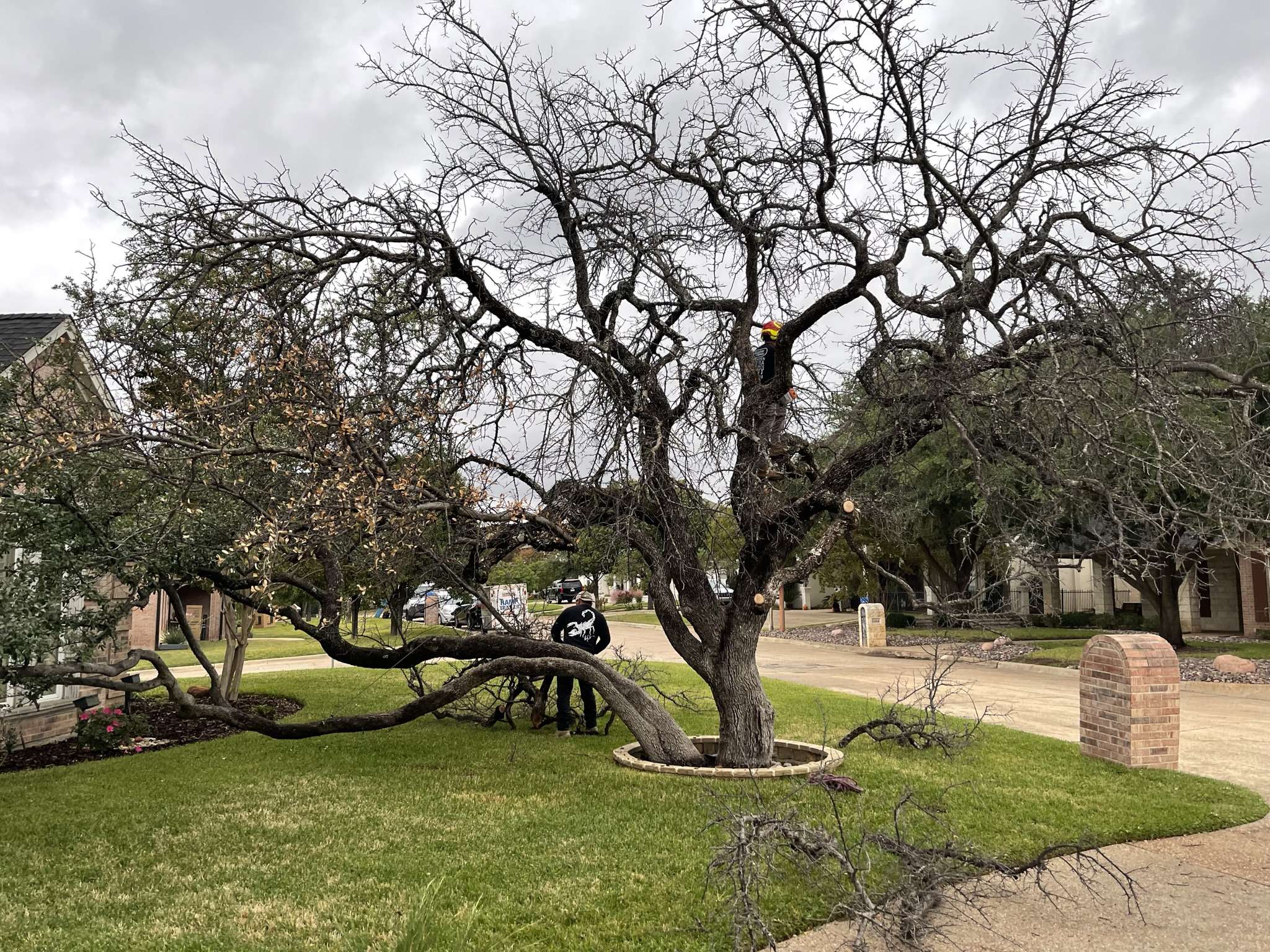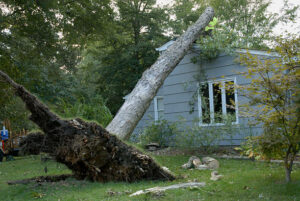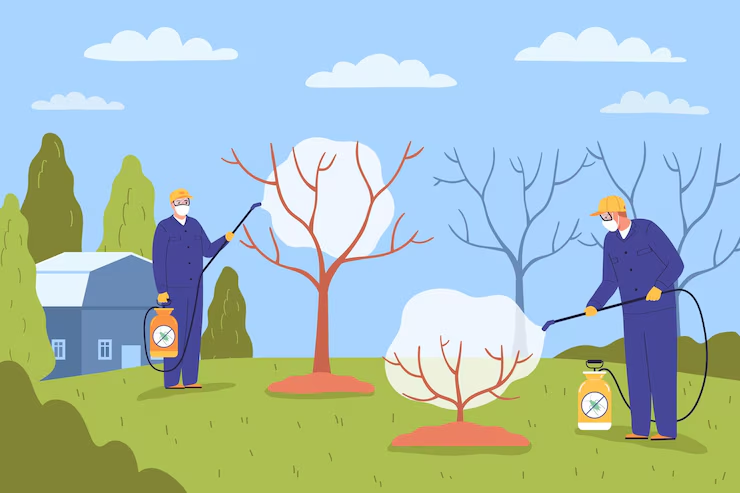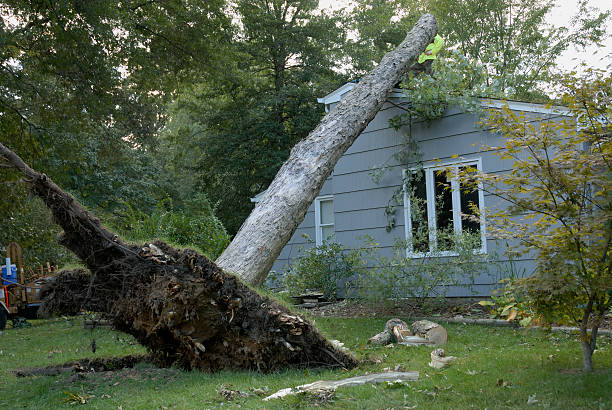Your trees add beauty, shade, and value to your property. But how do you know when they need help? Ignoring the warning signs can lead to safety hazards, property damage, and costly tree removal.
Here are 10 signs that mean your tree needs a professional assessment ASAP:
1. Visible Cracks or Splits in the Trunk
Cracks, splits, or hollow spots in the trunk weaken the tree’s structure. Over time, these can make it prone to breaking—especially in storms or high winds.
What to do?
- Check for large, deep cracks—if they extend into the tree, it’s serious.
- Look for missing bark—this can signal decay.
- Call an arborist if the cracks are growing or affecting stability.

2. Dead or Hanging Branches
Branches that are brittle, dry, or hanging pose a serious risk. They can fall anytime, damaging property or injuring someone.
Key Warning Signs:
- Branches snap easily when bent.
- No leaves in the growing season.
- Fungi or pests visible on the branches.
✅ Get these branches removed immediately to prevent hazards.
3. Excessive Leaning
A tree with a natural lean is fine. But if it’s suddenly tilting or leaning more than 15 degrees, that’s a red flag.
Why Trees Lean:
- Root damage from construction, soil erosion, or disease.
- High winds or storms pushing the tree.
- Uneven weight distribution from improper pruning.
👉 If your tree is leaning more than usual, get it checked before it falls!
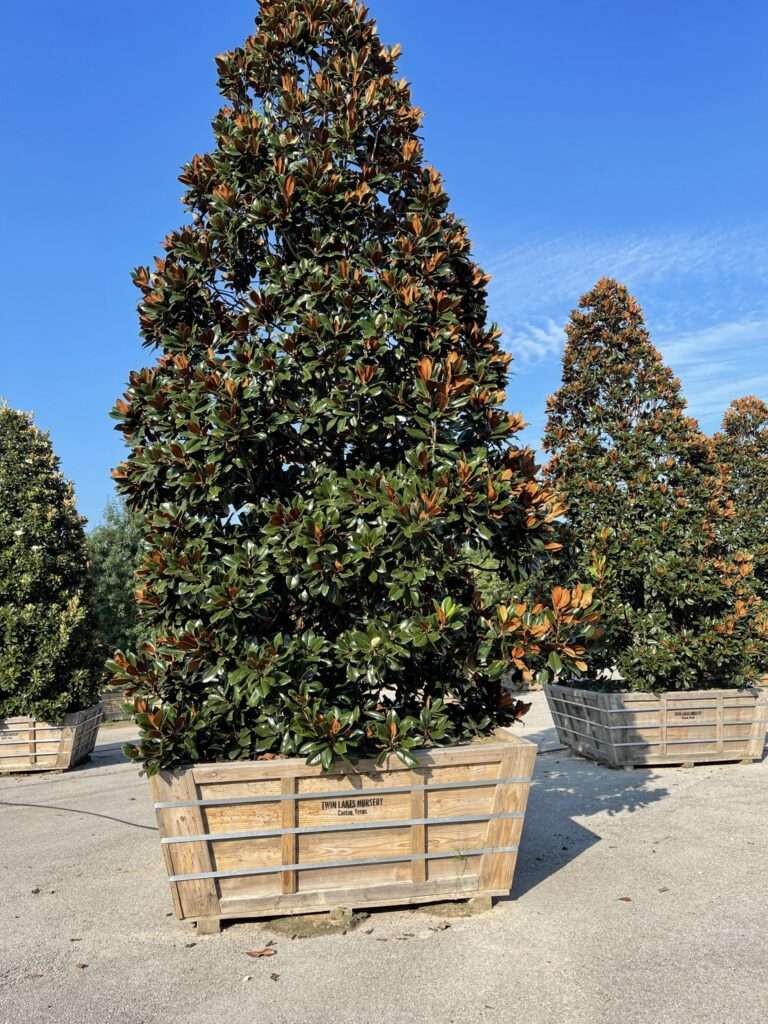
4. Fungal Growth at the Base
Mushrooms growing at the base of your tree? Not a good sign. Fungi indicate internal decay, meaning the tree could be rotting from the inside out.
What to Watch For:
- Mushrooms or fungal conks around the trunk or roots.
- Soft, crumbling wood.
- Hollow areas inside the trunk.
🔎 If you see these signs, your tree’s structural integrity may be compromised.
5. Unusual Leaf Discoloration or Early Leaf Drop
Leaves changing color too soon or falling off out of season? This could mean stress, disease, or poor soil conditions.
Possible Causes:
- Drought stress (lack of water)
- Nutrient deficiencies
- Pests or disease (fungal infections, root rot, etc.)
🌳 Healthy trees should keep their leaves until autumn. If yours isn’t, get it checked.
6. Peeling or Missing Bark
Bark protects trees. If it’s peeling, missing, or revealing bare wood, your tree could be stressed, diseased, or dying.
Check for:
- Large patches of missing bark.
- Discolored or sunken areas on the trunk.
- Insect infestations under peeling bark.
🚨 Trees with missing bark are vulnerable to infections and should be inspected ASAP.
7. Root Damage or Uprooting Signs
Roots anchor your tree. If they’re damaged, your tree can become unstable and fall.
Look for:
- Exposed roots from soil erosion or construction.
- Mushrooms around roots (sign of rot).
- Soil heaving (the ground lifting near the base).
💡 Root damage is a major risk factor for tree failure. Get an expert’s opinion.
8. Presence of Insects or Pests
Pests like borers, termites, and beetles feed on trees, causing irreversible damage.
Signs of Infestation:
- Small holes in the bark.
- Sawdust-like residue near the base.
- Increased woodpecker activity (they feed on tree pests).
🪲 If insects are present, your tree may already be compromised.
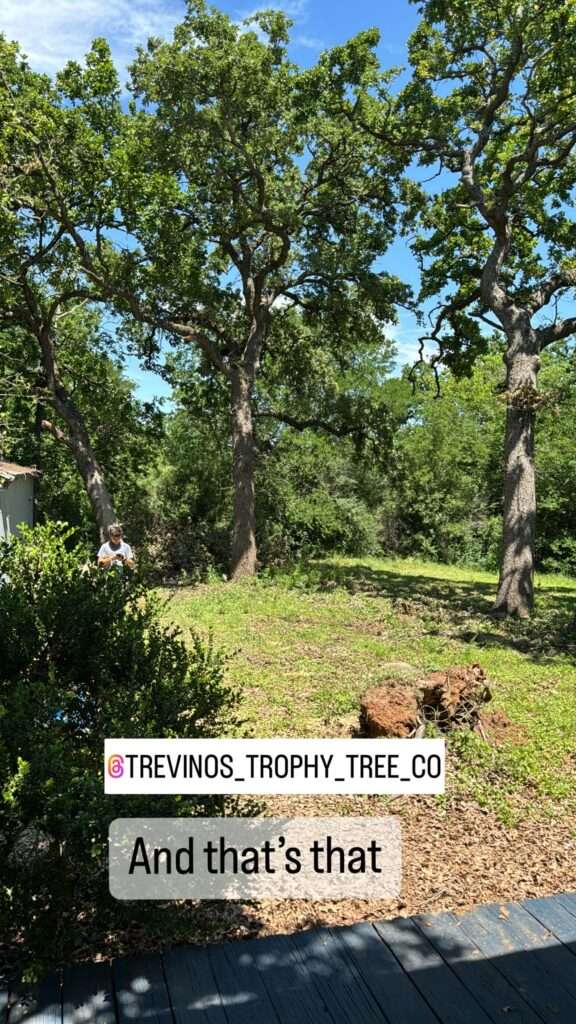
9. Sparse Canopy or Bare Branches
A healthy tree should have a full, vibrant canopy. If yours is thinning or has bare sections, something’s wrong.
Common Causes:
- Nutrient deficiency
- Pest or disease damage
- Structural weakness
🌲 If parts of your tree aren’t producing leaves, it’s a clear sign of poor health.
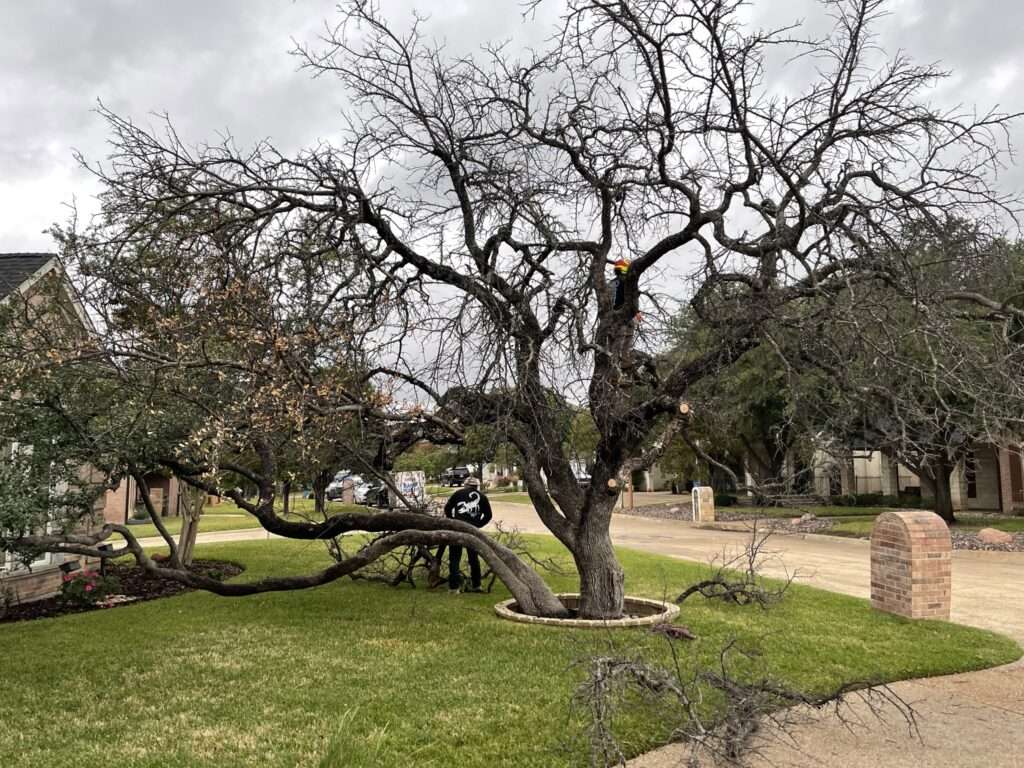
10. Storm Damage or Lightning Strikes
Storms can weaken branches, crack trunks, or uproot trees. Even if your tree looks fine, hidden damage could make it unstable.
Key Storm Damage Signs:
- Broken or hanging limbs.
- Splits or cracks in the trunk.
- Uprooted or leaning trees.
⚡ If your tree was struck by lightning, it might decay from the inside out.
What to Do If You Notice These Signs?
If your tree shows ANY of these warning signs, it’s time for an assessment. A professional arborist can diagnose problems early and prevent bigger issues.
👉 Trophy Tree Co. offers expert tree assessments and care in Fort Worth, Texas.
📞 Call us now: (817) 733-6804
🌐 Visit: TrophyTreeCo.com

FAQ
How do I know if my tree needs removal?
If it’s leaning dangerously, has major root damage, or is completely hollow, removal might be the safest option.
Can a sick tree be saved?
Yes! Early intervention can treat diseases, improve soil health, and strengthen weak trees.
How often should I get my trees checked?
We recommend an annual tree health check, especially if your tree is mature or exposed to harsh weather.
What happens during a tree assessment?
A professional arborist will:
- Inspect the trunk, branches, and leaves.
- Check for disease, pests, and decay.
- Evaluate root health and stability.
10 Warning Signs Your Tree Needs a Professional Assessment
1. Sudden or Severe Leaning
A tree that was once straight but has started leaning could be a sign of root damage, soil instability, or internal decay. Trees that lean more than 15 degrees should be inspected immediately.
2. Dead or Hanging Branches
Large, dead branches pose a safety risk, especially during storms. If you see branches that are brittle, without leaves, or dangling loosely, it’s time to call a tree expert.
3. Cracks or Splits in the Trunk
Deep cracks, cavities, or splits in the tree trunk weaken the structural integrity of the tree. These openings can also invite pests and diseases, making the tree more vulnerable.
4. Fungal Growth at the Base
Mushrooms or fungi growing near the roots or base of the tree often indicate internal decay. While some fungi are harmless, excessive growth can signal a deeper problem.
5. Bark Damage or Unusual Shedding
Bark protects the tree, and excessive peeling, missing patches, or open wounds can be symptoms of disease or insect infestations. Healthy trees naturally shed bark in small amounts, but large areas of missing bark are concerning.
6. Sparse or Discolored Leaves
If your tree is losing leaves outside its normal season or has sections with little to no foliage, it may be struggling with a disease, pest infestation, or root problems. Yellowing or wilting leaves can also indicate stress.
7. Root Damage or Decay
Exposed, damaged, or rotting roots are a major warning sign. Since roots anchor the tree, any compromise can make it unstable. If you notice heaving soil, fungi near the roots, or visible root damage, it’s time for an assessment.
8. Insect Infestation
Boring insects like beetles, termites, or carpenter ants can weaken the tree from within. If you notice tiny holes, sawdust-like material (frass), or increased bird activity pecking at the bark, insects could be at work.
9. Storm or Weather Damage
High winds, lightning, ice, and heavy snow can weaken or break tree limbs. After extreme weather events, inspecting your trees for damage is crucial to prevent falling branches or uprooting.
10. Neighboring Trees Are Dying
If nearby trees are suffering from disease or pest infestations, your tree could be at risk too. Early assessments can prevent the spread of issues and save your tree before it’s too late.
👉 Don’t wait until it’s too late! If you notice any of these signs, schedule a professional tree inspection to ensure your tree’s health and safety. 🌳🌿
Related Services in Your Area:
- Tree Removal Services in Arlington
- Tree Trimming in Fort Worth
- Emergency Tree Services
- Stump Grinding
Don’t wait for disaster! If your tree is showing any of these warning signs, let the experts at Trophy Tree Co. help.
📞 Call today for a FREE consultation! (817) 733-6804
🌐 Book an appointment here

